Forget Your 72-Hour Bug-Out Bag You Need More
Forget your 72-hour bug-out bag you need more. For those who may be new to the preparedness game, we have all been primed to have at least 72- hours’ worth of items necessary to make it through a disaster or event of an emergency. This stash of items has been called by a number of names, including preparedness kit, emergency preparedness kit, 72-hour kit, emergency kit, survival kit, disaster supplies kit, and bug-out bag.
How this stash is prepared and packed can take on a life of its own. A lot depends on how many items are actually included, their size, and if they need any special treatment when being put together. In most cases that I’ve seen, people will use a backpack or large duffle bag. It isn’t designed to include everything for the whole family. There should be a bag or kit for each member, including one for the little ones even if they can’t be the carrier of their own.
Although they could be used in a “shelter-in-place” scenario, they are usually put together so they can be quickly grabbed on your way out of the house. What we used to think was acceptable in a 72-hour bug-out bag or kit was okay, but over the years I’ve learned there are additional items needed to get you through. Before anyone gets too excited let me explain my thinking. I highly recommend Ray’s book, “Buggin In”
In case you missed this post, 11 Canned Meat Ideas I Recommend
What is really necessary for a 72-hour kit?
In the last 15-20 years, I think a 72-hour bug-out bag or kit was the thing we all did. Well, we need to up our game, my friends. I’ve been looking online at some groups who have a list of maybe 20 items and it all fits in a gallon container. No water. WHAT? They called this little unit a 72-hour kit! Crazy, huh?
Yep, that’s what I said. I looked at some items on the list that filled the gallon jug with a handle. I wouldn’t eat 99% of the food items on the list. If I was starving, of course, I would have to eat it, right? But I would be so thirsty from all the sodium and just need more to stay hydrated!
Okay, let’s get real here. If we have a disaster we will for sure need more critical items than 72 hours’ worth of food, water, etc. When I would pass out my suggested list of emergency items for a 72-hour bug-out bag to classes I would teach, people would just shake their heads like I was the crazy one.
Shout Out To Truck Drivers/Railroad Employees
I would joke that my list required a semi-truck. Just kidding, of course. By the way, we need to give a HUGE shout-out to our truckers and railroad employees who work 24/7 and work almost all holidays to bring us food, paper products, gasoline, and everything we see in our fabulous supermarkets, gas stations, hospitals, and more. Thank you!! Our current lifestyles would take a real hit if the truckers and railroad workers didn’t do their part to make our economy what it is today.
Here’s my list with many of them just basic items. Pick and choose the items you can’t do without in say 30 days. We certainly can’t have all these items if we expect to make them reasonably portable, but you should plan a fair amount or you could find yourself lacking what is needed. We need to step out of the 72-96 hour bug-out bag or kit right now. That amount of time is no longer realistic. Trust me, look at the news and you will see for yourself.
People are stranded a lot longer than that amount of time from different situations we see all over the country. Please don’t count on the government, they may not reach you for days or weeks.
It would help if you were prepared for the unexpected today, not tomorrow.
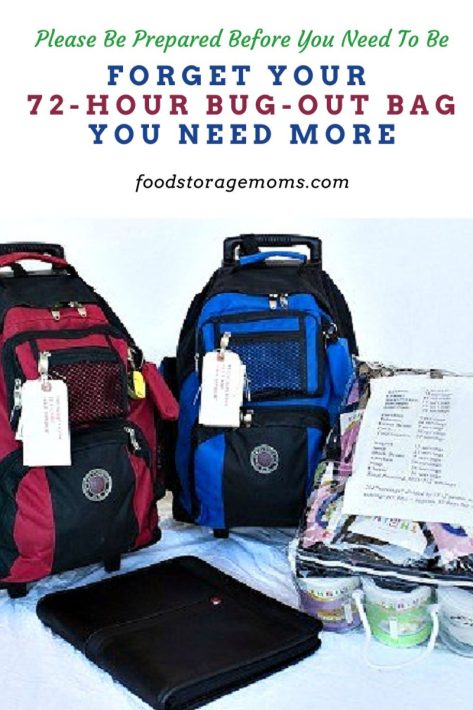
Bug Out Bag (you may need a trailer or you can bug in):
Every emergency agency in the country recommends having a 72-hour kit available to grab and go in an emergency. Be sure to update your kit every six months to a year, depending on the items you have in it and if the items need to be rotated like you do your regular storage items.
Include the food you know you will eat and items that can keep you busy during times of inactivity. Be mindful of storing items that might leak, melt, or affect other items in your bag if they do leak or break open (Ziploc bags might help with this problem).
Attach a tag to the kit or bag with your name, and phone number(s), a tag to remind you to grab your prescriptions/medicines, and a tag to grab your emergency binder. Depending on the needs of you and/or your family, items you could include in your kit are:
1. Water: at least three days supply (1-4 gallons per day per person), water purifiers, and water purifier bottles (like a Berkey Sports Portable Water Purifier) to last for at least three months.
2. MRE (Meals Ready to Eat): hot and cold ready-to-eat food packages; freeze-dried fruits and vegetables; and candy, gum, jerky, fruit snacks, raisins, fruit leather, granola bars, peanuts, crackers, etc.
3. Over-the-Counter Medications: Aspirin, Aleve, Ibuprofen, Vitamin C, cold remedies, Essential Oils, etc., and antacids (for upset stomachs) Don’t forget Tylenol PM or something similar to use as a sleeping aid.
4. Ax/shovel combo: in case you need to cut and clear debris or snow
5. Baggies: (all sizes) can come in handy to store items or discard trash
6. Extra Batteries: (all sizes-rotate yearly)
7. Bible/Scriptures/Games: you may be faced with more free time than you think
8. Bee sting & bite kit: you may have to set up camp in the out of doors
9. Blanket: (solar versions are thinner) may need it to stay warm day or night – also consider a sleeping bag
10. Pillow:
11. Bleach: (household chlorine–nonscented) could be used to clean and sanitize, but also treat water
12. Books: may need them to pass time, but also stay informed
13. Bung wrench/Gas shut-off wrench: use caution if there may be a gas leak and you’ll need the utility to turn the gas back on
14. CASH-small bills/coins: (if we lose power, ATMs won’t work; credit/debit cards won’t work)
15. Manual Can Opener: (non-electric) power may not be available
16. Canned stove: for outside use when cooking or keeping foods hot
17. Candles/glow sticks: for light and possibly to heat a small area – be cautious
18. Face Cards, toys, or small games to play:
19. Chapstick/lip balm: you may be outside for extended periods
20. Chargers: in case we have electricity
21. Coats/Jackets/Sweaters/Extra Change of Clothes & Shoes:
22. Coffee Pot, pitcher, and drinking portable container:
23. Cooking pot, griddle, or frying pan:
24. Cooking stove: chose some kind with the needed fuel, a firestarter or striker
25. Compass:
26. Contact lenses & supplies:
27. Cotton Swabs/Kleenex Tissues:
28. Disinfectant:
29. Duct tape:
30. Emergency sewing kit:
31. Fingernail clippers/nail file:
32. Fire extinguisher:
33. First-Aid Kit:
34. Hand Warmers:
35. Flashlights: (preferably solar or crank); don’t forget batteries (store batteries outside the flashlights to keep them fresh)
36. Garbage Bags:
37. Glasses: (extra pair of eyeglasses)
38. Gloves: latex or non-latex
39. Hair brushes/combs:
40. Hats, warm gloves, & scarves:
41. Headlamp:
42. Hearing Aids: plus spare batteries
43. Imodium/Anti-Diarrhea medicine:
44. Instant milk: (chocolate milk would be good as well)
45. Ipecac: (check with poison control if possible)
46. Hot pads, dish towels/rags/dish soap:
47. Lanterns/compact lights:
48. Hand Crank NOAA Weather Radio:
49. Masks N-95: minimum protection – consider dust masks too
50. Matches: consider a waterproof container too
51. Mess Kits:
52. Mirror:
53. Scissors:
54. All-Purpose Knife:
55. Mosquito Spray:
56. Personal Hygiene items: tampons, pads, feminine supplies, moist towelettes
57. Post-It Notes: pencil, pen, crayons
58. Plastic Sheeting: also plastic ties
59. Rain Poncho:
60. Rope:
61. Safety pins: several sizes
62. Shaving cream & shavers: (disposable)
63. Solar lights:
64. Sunglasses:
65. Temporary toilet and bags:
66. Thermal Underwear:
67. Thermometer:
68. Personal Sanitation: Toilet Paper, shampoo, hand soap, baby wipes, hand sanitizer, deodorant, toothbrushes, toothpaste, tweezers, & paper towels
69. Tools:
70. Tent(s):
71. Umbrella:
72. Utensils, plates, cups, and silverware: to cook and eat with
73. Vaseline:
74. Wet wipes: lots…they might be your only shower
75. Whistle & Walkie Talkies: (test before you need them for distance) like Motorola Talkabout 2-Way Radios
76. Baby Needs: diapers, infant formula
77. Work Gloves: grab socks, shoes, boots, and dryable clothing
Additional Items to Consider:
- Items for Pets: food, leash, winter coat
- Local Maps
- Cell phones
- Important family documents: bank account records, insurance policies, personal identification, birth & death certificates, doctor and dentist information, medical records, etc.
Final Word
Remember, you would need a truck to “haul” all of these items, so check off one item at a time and pick the items that meet your family’s needs. These are IDEAS, just start collecting a little at a time.
Put all the things that need to be rotated together in baggies. This way you GRAB a bag and switch out the outdated items.
Please remember my book is available: Prepare Your Family for Survival. May God bless this world. Linda

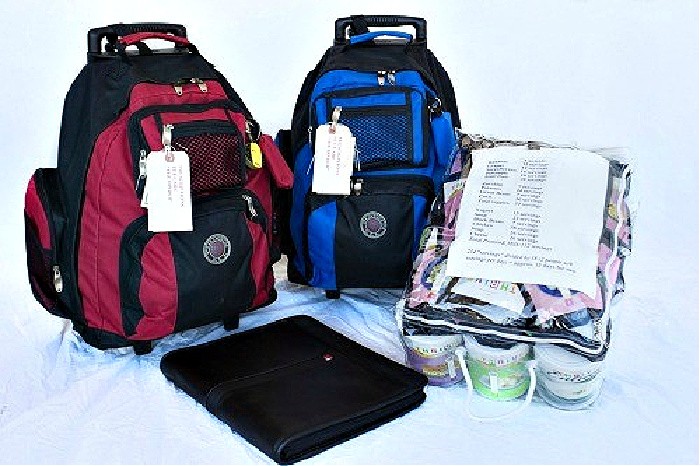

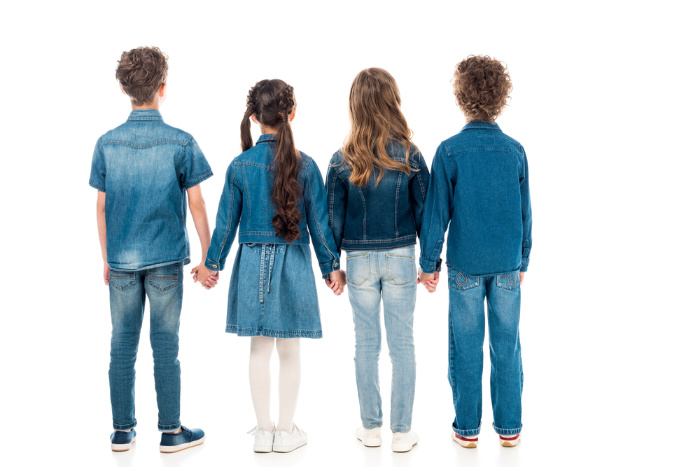
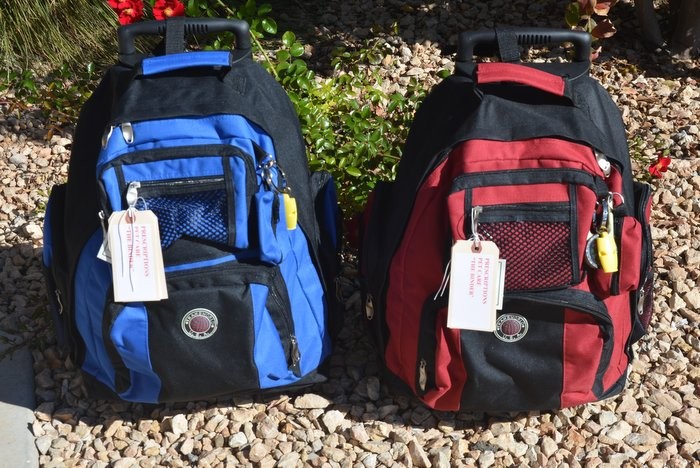
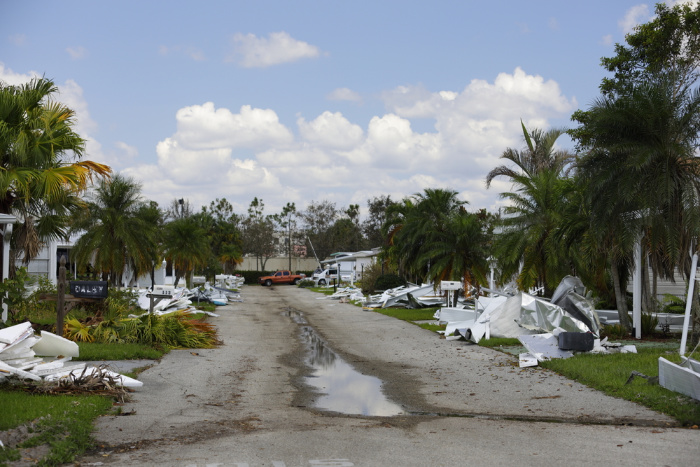
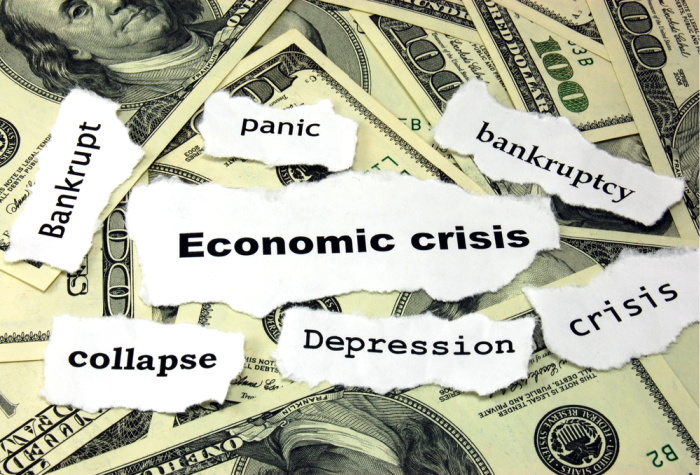
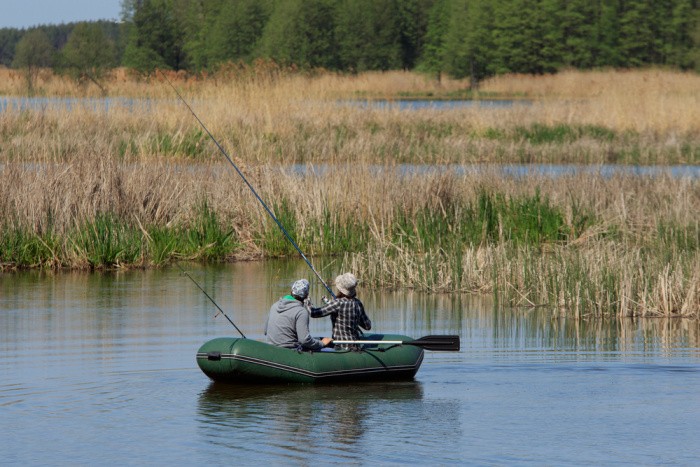
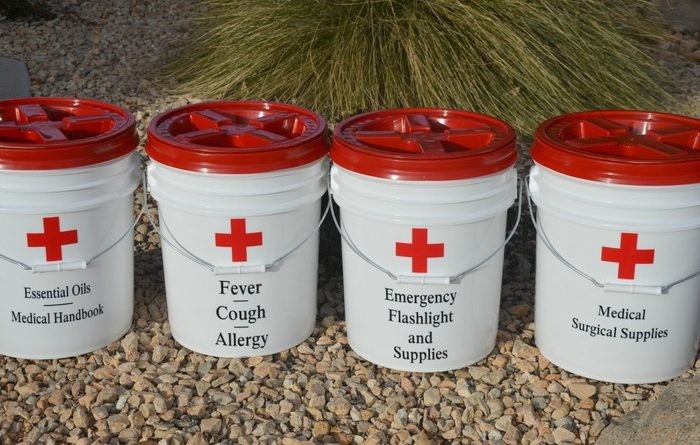













The thought behind 72hrs is that government and NGOs will be set up by then.
I don’t depend on them however having been on the rescue side it sure helps when folks are somewhat self sufficient for a few days.
Katrina was a good example of not having anything and expecting to be fed immediately and not miss a beat. They literally didn’t plan to take care of themselves at all. Even when an organization shows up it take storm to set up and get logistical support rolling.
72 hrs is a good start but should never be the end game goal.
Hi Matt, yeah, my sister lives in Texas where they bussed people from Katrina to house, feed, etc. Some of the people didn’t like the food, or where they were housed. It was rough for both sides of the table. Some truly did not plan to care for themselves. That’s really hard for everyone. I had to Google NGO (non-governmental organization). Thanks, Matt! Linda
Linda, you covered everything except a means of self defense. I always have a stun gun and pepper spray either in my car or on me. I’ll not to mention any firearms or knives that may or may not be available.
No one should ever depend on the government to save them.
In my area of Arizona about the only thing that could force us to bug out would be a house fire or an armed invasion, so we’ll be staying put, bugging in, if you will.
Hi Ray, I’m with you, I need to go add your book, Bugging In. Thanks for the reminder. Linda
Some of the things you cannot fit in your bug out bag and you are unlikely to need while evacuating could be cached on your property in a buried waterproof drum. Bury it today and leave it empty but ready. While waiting to determine how bad things are and to decide if you really need to leave home, you could be packing that drum with extra survival items, like a camp stove, propane bottles, matches, water, a bigger medical kit than you can carry, a tent, a collapsible water jug to carry water you might have to obtain somewhere off site, weapons and ammunition. Could also cache extra clothing, blow up mattresses, linens, family heirlooms, expensive jewelry, cash, checkbooks, kids’ favorite loveys, cooking utensils, your cast iron cookware, paper plates, cutlery, and canned food. You cannot assume your house is going to be there when you are able to return (and your bug out bag may be nearly empty when you do). Fire is a strong threat in a disaster (refineries and chemical plants are terrorist targets) and your house may catch fire from one somebody else started. People in Panama City, FL, lived in tents on their property for many months after Hurricane Michael hit and had blown the houses completely away. They couldnt stay in hotels for 9 or 10 months, so they camped on their own property. They walked to a disaster relief station and brought back fresh water and food. You need to be able to pick up your life and go on, if you have no house.
Hi Angela, I LOVE your comment! Great idea! Thank you for sharing the Hurricane Michael story. All we see is what is on the news, I’m to hear they were able to camp on their property and still be able to walk to a disaster relief station for food and water. No one could afford to stay in a motel for 9 or 10 months. Wow! Linda
I might suggest prescription medications, at least a 30 day supply. We are running into a supply issue because our insurance is changing January 1st. and our current plan is refusing to fill prescriptions.
Hi Chris, WHAT??? Your current plan is refusing to fill prescriptions, yikes!! I have heard many many prescriptions are in short supply and the doctors are having to change their most popular prescriptions with the ones they can get. The hospitals are overflowing with RSV, Influenza, and C. I just filled my with 90 days, not sure what will happen after that. Crazy! Linda
I love that you put Bible at the top. We need to read Gods word and pray, equally as much as prepare…
Great list, I still need a few things but getting there. I enjoy your newsletters.. Thank You for sharing… Love from NH
Hi Laurie, thank you for your kind words, my friend. We really do need to pray!! Every little bit helps as we add it to our stash, a little at a time. Linda
I’m far away from hurricane and fire dangers, the only things I’ve heard of to cause mandatory evacuations are nearby industrial fires and chemical spills from railroad derailments. The longest evacuation has been overnight. I am also mobility challenged and currently rely on a walker for movement. Unless we are under a mandatory evacuation order, we will be bugging in.
If we have an hour to prepare for evacuation, we will take our camper. In an hour, we can load the camper with food, water, clothing and medicine; the cat & his supplies; fill the freshwater tank, hook up and be down the road.
I’m working on getting a 30″ rolling duffle bag for an immediate evacuation. The duffle bag would hold clothing for both of us, an extra harness and leash for the cat, plus many of the items listed in a 72 hour kit except food. We have a backpack cooler packed with canned goods, can openers, easy to fix items, a foldable stove and fuel, cookware, mess kit and silverware. One of my 2023 goals is to get one of the soft sided fire bags that you recommended a while back and use it to store our important paperwork that we would need if we were evacuated. All of these would be stored in the entryway coat closet. To leave, all we need to do is take those, the cat & his supplies and hop in the car. Once again, we have assigned tasks and could be out of the house in 10 minutes. If we can take the camper, all that will go into the camper first.
Due to mobility and medical problems, we would need to evacuate to a hotel or center that can handle people with medical conditions. Hopefully, we could evacuate with our camper to a campground with water and electricity, or at least to one with water and we can use the solar panel for some uses.
Hi Topaz, I love hearing how well you have planned out your evacuation if needed! Having a camper is a blessing, keep up the good work, you are doing a great job! Linda
Know how to use each item in your kit. Although this may mean buying double on some items, it definitely beats having items that you don’t know how to use at all when a disaster hits.
A super informal estimate would be that 70% of folks who buy readymade kits have never practiced their use. This is “Pie in the Sky” preparation, though anything is better than nothing.
Try a backyard “survival weekend” with the kids, repeat necessary skills until muscle memory forms, etc. They’ll develop self confidence, and may save Mom and Dad’s life someday. Let them get used to being dirty, or wet, or even hungry while you’re around to help them, b/c someday you may not be.
Hi Jordan, great comment, thank you! You are so right please practice using what you purchase for survival! I like your 70% theory, I’m estimating only 10% or less have tried them. I hope I’m wrong. Some people are afraid to take the items out of the box, assuming they purchased some NEW items! Linda
Do you know about Scrubzee Bath Alternative Rinse Free Bath Sponges? You can add a tiny amount of water and wash your entire body, including your hair. Of course, you need to prioritize what parts you wash first! No rinsing is required. Just dry with a towel. They would be great in a disaster situation, but also for camping, people who are recovering from surgery, and those with low mobility. In an emergency situation, it would be a great comfort to be clean! I am mentioning them because your list mentions wet wipes. Those are great for your face or hands, but not overall cleanliness. Thank you for the great list!
Hi Linda, oh my gosh, I had not heard of these! I will be ordering some very soon. These look awesome! Thank you for the tip! https://amzn.to/3Cwb5BP
Linda